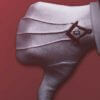The passing of Pope John Paul II on April 2, 2005, marked a significant transition in the Catholic Church, but it also stirred curiosity about an ancient prophecy linked to the end of the papacy. With the traditional Rite of Extreme Unction, his death was solemnly acknowledged by the Vatican chamberlain, and Pope Benedict XVI took over. Yet, lurking behind this procession of Popes is a mysterious prediction from nearly a millennium ago—the Prophecy of Malachy, which suggests we may be approaching the end of an era.
The Origins of the Malachy Prophecy
In 1139, Saint Malachy, an Irish bishop reputed for his prophetic visions, is said to have experienced a vivid revelation while visiting Pope Innocent II in Rome. He reportedly foresaw the lineage of Popes to come, outlining a succession of 112 pontiffs beginning with Celestine II, who took the papal throne in 1143. This cryptic list, forgotten in the Vatican archives for over four centuries, was rediscovered in 1597 and has since captivated the faithful and skeptics alike.
Each Pope was assigned a Latin motto, a short phrase that seemed to encapsulate their reign. Over the centuries, these descriptions have intriguingly corresponded to various details of the Popes’ lives, heraldic emblems, or historical events.
Predictions Fulfilled?
The prophecy has accurately matched a number of Popes leading up to the present day, including some compelling cases in recent history:
- Pope Paul VI (#108): Malachy described him as Flos Florum or “flower of flowers.” His coat of arms bore three irises, emblematic of this prophecy.
- Pope John Paul I (#109): Dubbed De Mediatate Lunae, or “from the half moon,” he was elected during a half moon and died just over a month later, when the moon returned to a similar phase.
- Pope John Paul II (#110): Called De Labore Solis, or “from the labor of the sun,” he was born during a solar eclipse and had a globally impactful papacy.
Each of these Popes, seemingly matched by Malachy’s vision, has only intensified the speculation as we move closer to the list’s final figure.
The Final Two Popes: Benedict XVI and Francis
According to the prophecy, Pope Benedict XVI (#111) was termed Gloria Olivae, or “glory of the olive.” Although the olive branch is often a symbol of peace, it’s also connected to the Benedictine order, whose emblem includes an olive branch. Benedict XVI’s papacy was marked by efforts to bring peace and unity to a turbulent church.
However, the prophecy becomes more ominous with the mention of the 112th Pope, Petrus Romanus or “Peter the Roman.” According to Malachy, this last Pope will preside over the Church through an era of great tribulation, ultimately leading to the destruction of Rome itself. Since Pope Francis succeeded Benedict XVI in 2013, the speculation has intensified. Many ask: Is Pope Francis the fabled “Peter the Roman”—the last Pope on Malachy’s list?
Pope Francis and the “End of Days”
Francis, originally named Jorge Mario Bergoglio, does not bear the name Peter. Yet, as a member of the Jesuit order, he reflects a lineage that some associate with St. Peter through the Jesuits’ founder, Ignatius of Loyola. Could he symbolically fulfill this role despite not bearing the name directly? Francis has indeed focused his papacy on themes of humility, service, and a return to the Church’s fundamental roots, which echoes the spirit of St. Peter, the first Pope.
Additionally, Father Malachi Martin, a noted Vatican scholar, warned that following Pope John Paul II (#110), a period of great turmoil would emerge. Martin referenced the Third Secret of Fatima—a controversial prophecy revealing visions of apocalyptic events—that may align with the dire predictions Malachy spoke of for the last Pope. Father Martin’s interpretations included natural disasters and societal collapse, warning that Pope Francis’s era might see the beginning of such upheavals.
A Legacy of Prophecy and Mystery
The prophecy of Malachy concludes ominously with a vision of Rome’s destruction and a final judgment. Whether one believes in the prophecy or sees it as a relic of medieval mysticism, it undoubtedly presents a captivating narrative that raises questions about the future of the Catholic Church and the role of Pope Francis in history.
Could Pope Francis indeed be the last Pope? As he navigates the Church through unprecedented times, including global crises, Vatican reform, and a world seeking meaning amid chaos, this ancient prophecy continues to loom large. For now, only time will reveal the full truth of Malachy’s visions, leaving the faithful and the curious alike to ponder the unfolding of his final prediction.



